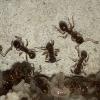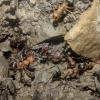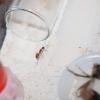well it really depends on the species and colony from what I've read. I have seen many pseudomyrmex colonies housed in traditional formicariums.hi i justs aquired Pseudomyrmex simplex, you are saying they have to be in a twig or they will die?...
Edited by Manitobant, September 10 2019 - 6:58 AM.

























